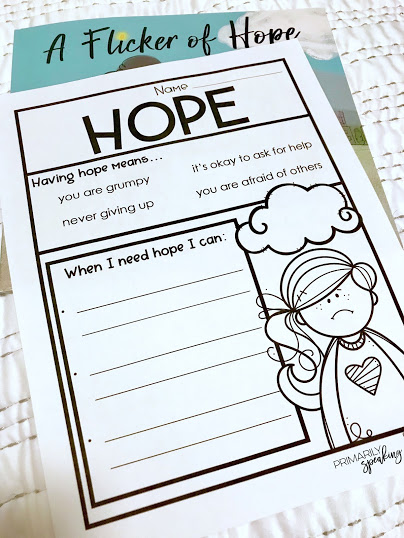A Flicker of Hope: Teaching Children How to Have Hope and to Ask for Help
There are two kinds of books that I am constantly seeking out. They include books about individuality and books that help teach resilience and perseverance. So, when the National Center for Youth Issues reached out and asked if I would like to review A Flicker of Hope by Julia Cook, I jumped at the chance.I received this book for free to provide an honest review. All opinions expressed within this post are genuinely my own and impartial.
This post contains affiliate links for your shopping convenience. I earn a small commission each time someone makes a purchase through one of my links. For more information about my Disclosure Policy, please visit this link.
What's it about?
A Flicker of Hope is Julia Cook's newest book. If you aren't familiar with Julia's work, do yourself a favor and get familiar with it. Her books are perfect for addressing a myriad of issues relating to kids' well-being and development.
A Flicker of Hope is about a little candle whose flame isn't burning as bright as it once was. She constantly finds herself beneath a canopy of black clouds, which is dulling her flame. Little candle feels like giving up. This all changes when another candle approaches her and offers her words of encouragement, or hope. Little candle is reminded that she is important, that she has a special role to play in this world, and that she matters. She's also reminded that she isn't the only one who feels bogged down by troubles and that it's alright to ask for help. As her new friend gives her hope, little candle's flame begins to grow brighter, and eventually, she is able to share hope with others.
Why is this message important?
Having hope is a part of life. In fact, it's a necessary part of life. Without hope we have don't have perseverance, determination, or a sense of accomplishment. Our world is filled with high expectations, unkind people, naysayers, and other pressures. Hope helps us to overcome these adversities. Having hope can take us from a place of darkness to a place of light. It can free us and empower us to believe that better days are ahead.
Sometimes, as a part of having hope and coping with the challenges of everyday life, we have to ask for help. While this may seem basic and obvious to many, the reality is, many kids struggle with this. Seeking help is interpreted as being weak or lacking knowledge. Or, it's downright scary. Kids need to know that reaching out to others is an important life skill. One that will benefit them more than they could ever imagine.
Fostering the psychological and emotional development in children is important. If you haven't heard of the The National Center for Youth Issues, be sure to visit their site. They create resources that address the developmental needs noted above. They also provide adults with effective tools to help kids as they develop in these areas. What they do is important. Please visit their website to learn more.
How will this book benefit me?
Picture books are a classroom teacher's most powerful tool. Kids love to be read to. Even the bigger kids (this book is perfect for this age group). This book offers a means to facilitate important conversations about asking for help, valuing your strengths, and helping others to do the same.
How can I use the book?
- Read it to your class and lead them in a discussion about having hope and asking others for help. You might create an anchor chart with them. Brainstorm a list of people they can turn to and how those people can help.
- Turn the book into an interactive read aloud. Meaning, you read the book and in doing so, engage your students in meaningful discussion about the text by asking questions. Be sure to plan this out ahead of time to maximize the effectiveness of your read aloud.
- After reading the book, have your students complete a reading response journal entry. They could write about a time when they reached out to someone for help, or a time they helped someone find hope. Or, they could write about why they think having hope is important.
- After reading the book, discuss the points noted on the organizer pictured below. Then, have students complete the organizer. Use this organizer to help students identify what hope is and what they can do to when they need hope.
You can grab this free organizer by clicking here.
Click here to see this book on Amazon.
This book is a wonderful tool to have on hand. Sometimes it can be difficult to have conversations about psychological and emotional needs when your expertise is in differentiating math, or creating engaging reading lessons. However, more and more, our students need us to be able to address these needs, and a book like A Flicker of Hope, is a great way to help you facilitate this process. For more wonderful Julia Cook books, click here.
DON'T FORGET IT, PIN IT!

Share It:











